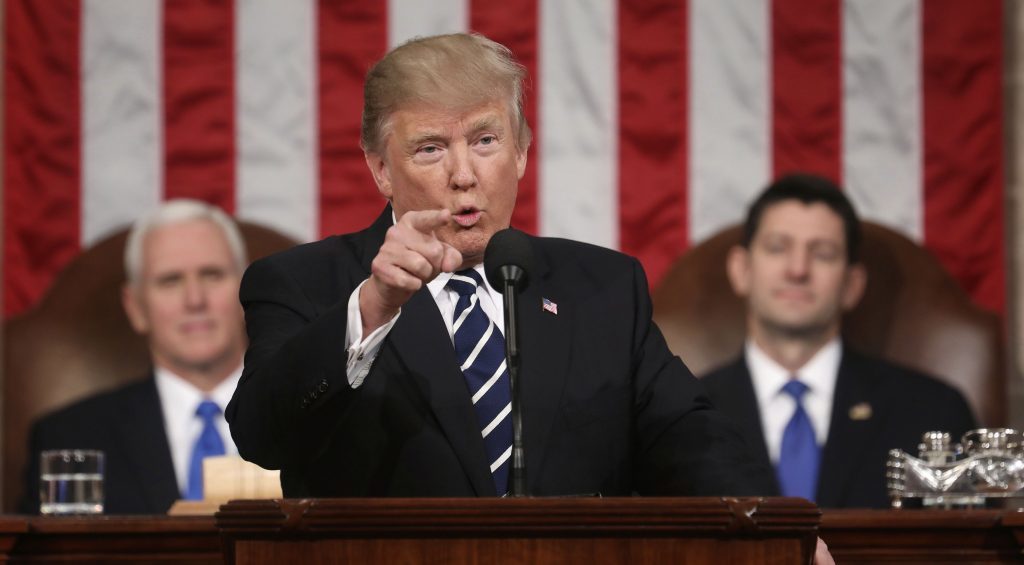
The White House plan to trim the national debt includes selling off half of the nation’s emergency oil stockpile, part of a broad series of changes proposed by President Donald Trump to the federal government’s role in energy markets.
Trump’s first complete budget proposal, released in part on Monday, would raise $500 million in fiscal year 2018 by draining the Strategic Petroleum Reserve, and as much $16.6 billion in oil sales over the next decade.
The proposal also seeks to boost government revenues by allowing oil drilling in the Alaska National Wildlife Refuge, ending the practice of sharing oil royalties with states along the Gulf of Mexico and selling off electricity transmission lines in the West. Like much of the budget, those moves are likely to face opposition in Congress.
Presidential budget proposals typically undergo significant changes in Congress, but provide insight into White House priorities.
The Strategic Petroleum Reserve currently holds 687.7 million barrels of oil in salt caverns and tanks at designated locations in Texas and Louisiana. That allows for quick distribution when natural disasters or unplanned accidents occur, according to the Energy Department website.
Measures passed in 2015 and 2016 call for the sale of nearly 190 million barrels of oil from the reserve between 2017 and 2025, to raise money for unrelated government programs. Those sales would cut the reserve by about 27 percent. Slashing the stockpile by half would require further sales, and would risk breaching the legally required inventory threshold. The reserve must contain a minimum of 450 million barrels.
The budget summary document doesn’t indicate the scope or timing of potential oil reserve sales, or whether a $2 billion program to modernize the stockpile’s infrastructure would be affected.
Oil, Gas Proposals
Trump is also seeking to raise money with two other proposed changes — one that would be cheered by the oil industry and another that would draw its ire.
For instance, he projects raising $1.8 billion over the next decade by opening up the 19-million-acre Arctic National Wildlife Refuge to oil and gas development. The idea of allowing drilling in the refuge for its estimated 12 billion barrels of crude has long been championed by Alaska Republicans, including Senator Lisa Murkowski, who heads the appropriations subcommittee in charge of Interior spending.
But it’s anathema to environmentalists, who have successfully blocked ANWR drilling plans from advancing on Capitol Hill by stoking concerns about threats to the polar bears, caribou, wolves and other animals that live in the territory.
Trump’s budget request suggests ANWR leasing could begin to pay off in fiscal 2022, with $100 billion in projected revenue that year. In addition to environmentalists’ opposition, it’s unclear how much appetite energy companies would have for the reserve. Monster discoveries there could yield decades of oil production, but the cost of operations in northern Alaska could discourage the activity amid modest crude prices and the domestic shale boom.
Offshore Royalties
Trump’s budget request also revives an Obama-era proposal to cut the payments Gulf Coast states collect from offshore drilling near their coastlines, a change that would translate to an extra $3.56 billion in federal revenue over the next decade. Under a 2006 law, four Gulf states — Alabama, Louisiana, Mississippi and Texas — now claim 37.5 percent of the royalties that oil and gas companies send the federal government in exchange for drilling rights and production on some Gulf of Mexico leases.
Trump’s move echoes Obama’s attempt to divert some of those royalty payments. And his bid to quash state revenue sharing is likely to meet the same fierce resistance that Obama’s plans did. Just as they did under Obama, Gulf Coast lawmakers also will vigorously fight to defend those payments, which help support restoration programs.
The budget also proposes restarting the Nuclear Waste Fund Fee in 2020, a sign that the administration is planning to have a permanent storage site for that waste up and running by that time — presumably at a site in Nevada known as Yucca Mountain. That fee would raise nearly $3.1 billion over 10 years, it estimates.
The White House foresees $2.4 billion in additional revenue in 2019 from the sale of federally-owned transmission lines in the West. Those power lines mostly carry electricity from government-owned dams to metro areas.
Recommended for you
